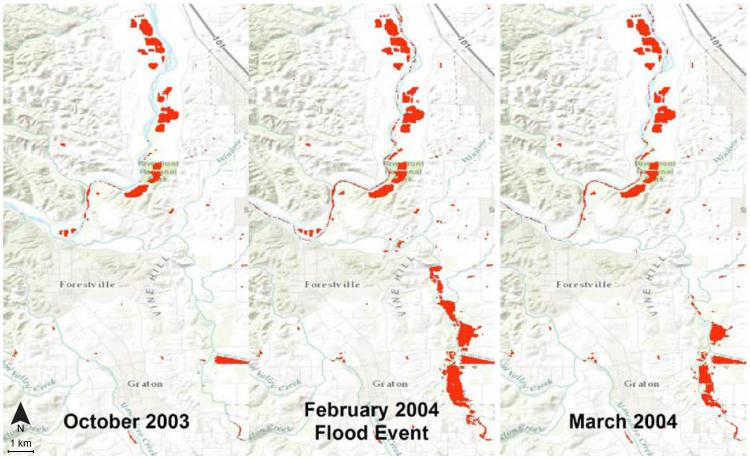The USGS project Patterns in the Landscape–Analyses of Cause and Effect (PLACE) is leveraging improvements in image processing capabilities to advance understanding of the driving forces and impacts of landscape change over time. PLACE researchers are synthesizing Landsat 30-meter (m) imagery and ancillary products within a high-performance cloud-computing environment (Google Earth Engine) to monitor and assess flood hazards in the western United States from 1985 to 2015. The primary objective of the project is to investigate how climate processes influence the timing, location, and scale of flooding events in areas that are vulnerable to costly and dangerous repeat inundations. The project combines USGS streamgaging station records with 30-meter resolution maps of surface-water coverage produced by the European Commission's Joint Research Centre (JRC) and the USGS Dynamic Surface Water Extent (DSWE) project. Maps will be coupled with historical climate records, chronologies of extreme weather, and hydrogeomorphic information to help quantify the causes of inland flooding. Resulting flood maps will also be intersected with annual maps of human land use (rural, urban, agriculture, etc.) to investigate how humans might either affect or be affected by floods. By understanding the causes and patterns of floods, USGS researchers can improve flood predictions and assist planners and first responders in anticipating future flood risks to human populations. PLACE will help fulfill goals set forth in the DOI Strategic Plan 2018-2022 by better informing land use planning with mapping, and by monitoring and assessing natural hazards risks for improved response planning.
https://geography.wr.usgs.gov/science/DrivingForcesOfLandChange/index.h…

Monthly surface-water maps (red) show flooding along the Russian River in northern California corresponding to a known atmospheric river precipitation event in February 2004.

